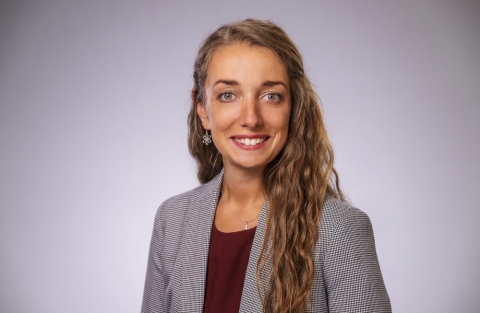
Date:
Location:
Speaker:
Abstract: With the ubiquity of catalysts in industrial processes for chemical, fuel, polymer, and pharmaceutical production, catalyst design that limits deactivation and improves efficacy (in terms of mass transfer artifacts and/or selective conversions) can decrease process energy demands. Further, catalytic processes for hard-to-decarbonize sectors (e.g., energy-dense fuels and chemicals) will continue to be of relevance, particularly when they utilize “close-carbon” feedstocks such as biomass or waste plastics, the latter of which can simultaneously address plastic pollution. Microporous Brønsted acid zeolites (d pore < 2 nm) can enable selective conversions via molecular sieving and van der Waals stabilization of transition states for hydrocarbons and oxygenates. However, conversion and formation of diffusion-limited reactants and products, such as substituted aromatics or polyolefins, are often hindered in micropores, leading to low reactivity, premature catalyst deactivation, and/or undesired diffusion-enhanced secondary reactions. The synthetic (via organic templating) or post-synthetic (via acid/base leaching) incorporation of mesopores (d pore = 2-50 nm) is one route to alter mass transfer within zeolites. Despite generally enhanced bulk performance of mesopore-modified “hierarchical” zeotypes in upgrading bulky molecules, we show that diffusivity enhancements must be contextualized with crystal sizes, microporous framework architectures of parent zeotypes, and active site distributions (or zoning). Here, the alkylation of 1,3,5-trimethylbenzene (TMB) with benzyl alcohol (BA) and the hydrocracking of polyethylene (PE) are probed on various microporous and hierarchical zeolite frameworks to deduce diffusional effects on rates, selectivities, and stability using kinetic analyses and observed changes in reaction and deactivation rates. These insights into reaction engineering in diffusion-limited extremes according to mesopore accessibility highlights the flexibility of zeolites in other reaction systems.
Bio: Michele L. Sarazen is an Assistant Professor in the Department of Chemical and Biological Engineering at Princeton University. Her research group couples synthetic, kinetic, and theoretical investigations of porous crystalline materials as catalysts and adsorbents for sustainable fuel and chemical production with an emphasis on reaction and deactivation mechanisms. She earned her BS in Chemical Engineering, summa cum laude, at the Pennsylvania State University and her PhD in Chemical Engineering from the University of California, Berkeley. Her thesis, completed under the guidance of Enrique Iglesia, investigated zeolite-catalyzed alkene and alkane chain growth reactions through both experimental and theoretical approaches. She was a postdoctoral fellow at the Georgia Institute of Technology, working with Christopher Jones on the synthesis of hybrid adsorbents for direct air capture of CO 2 and metal-organic framework-based catalysts. Her recognitions include the National Science Foundation Graduate Research Fellowship, Howard B. Wentz, Jr. Junior Faculty Award, National Academy of Engineering Frontiers of Engineering, as well as a Division Director for the American Institute of Chemical Engineers in Catalysis and Reaction Engineering, current-past Chair of the Catalysis Society of Metropolitan New York, featured in “Movers and Shakers” in The Catalysis Review magazine, and Journal of Catalysis Early Career Board member. She has served on the organizing committees for NorthEast Corridor Zeolite Association 2020 and 2021 annual meetings, North American Catalysis Society’s NAM27, and 2028 International Zeolite Conference.



